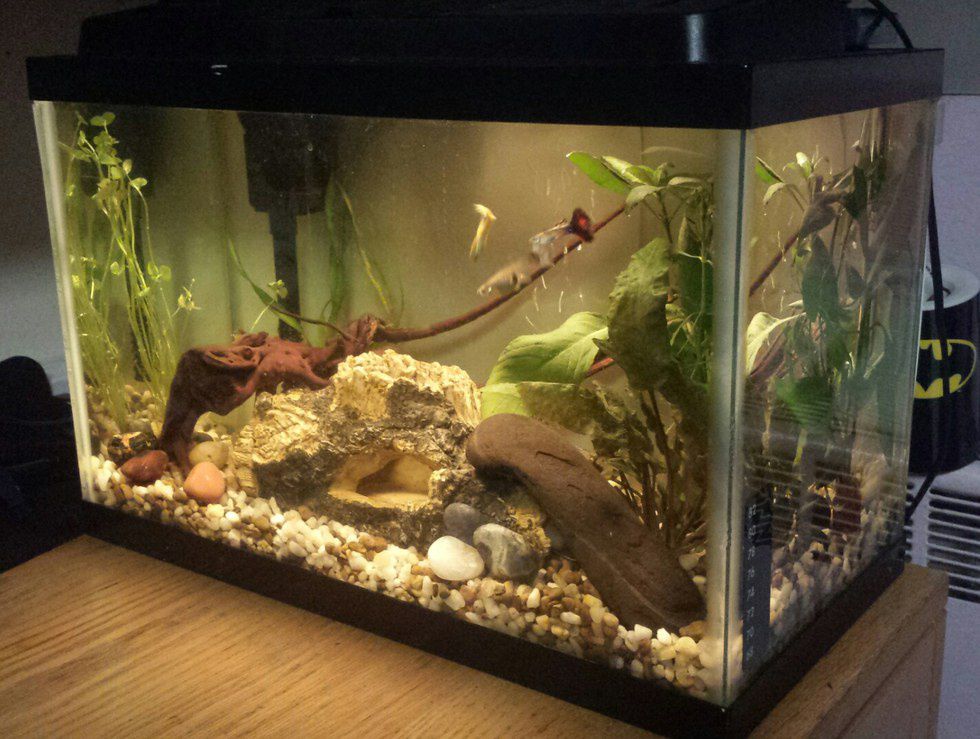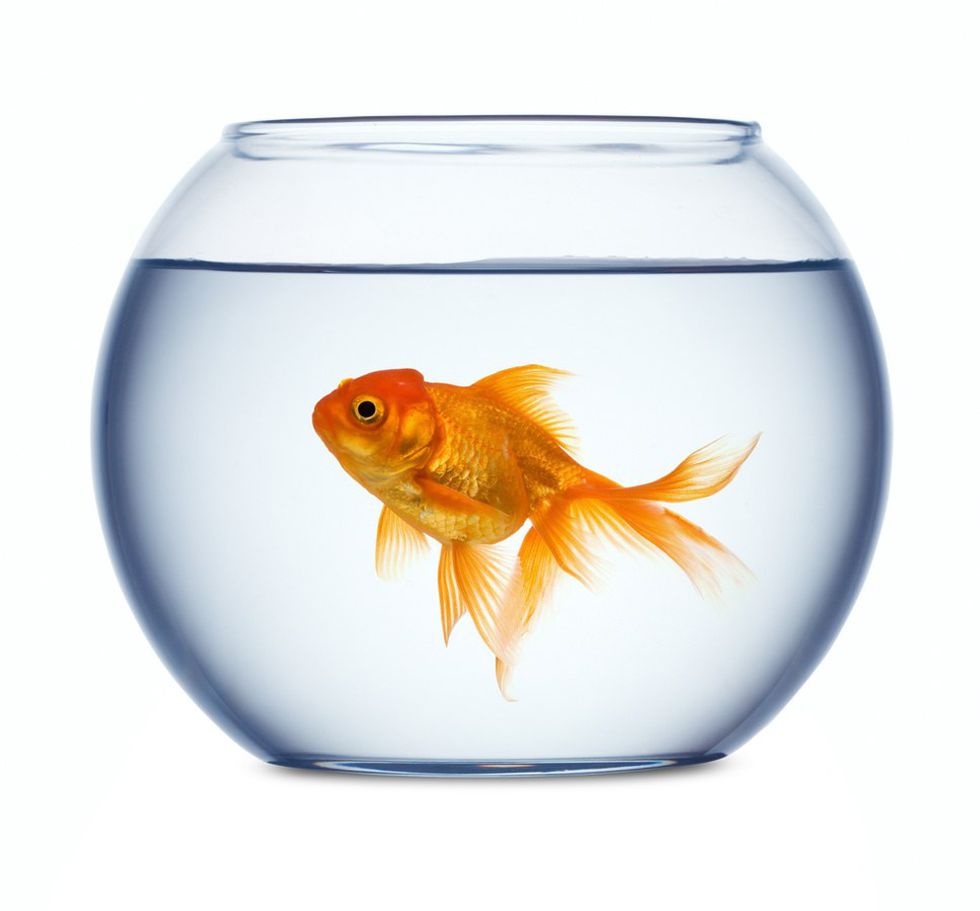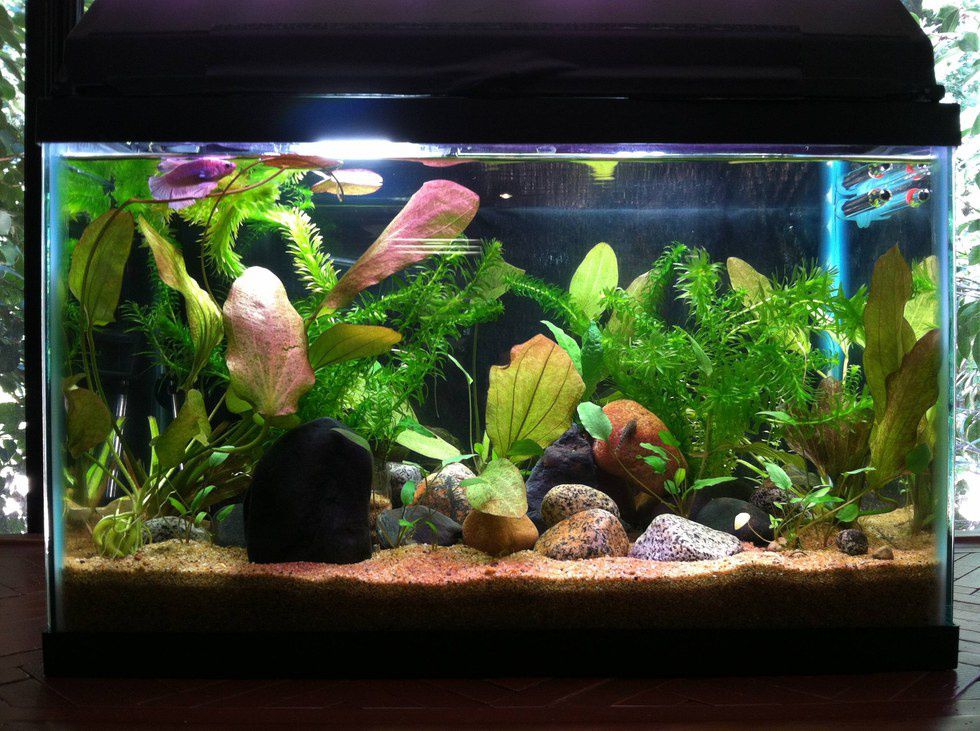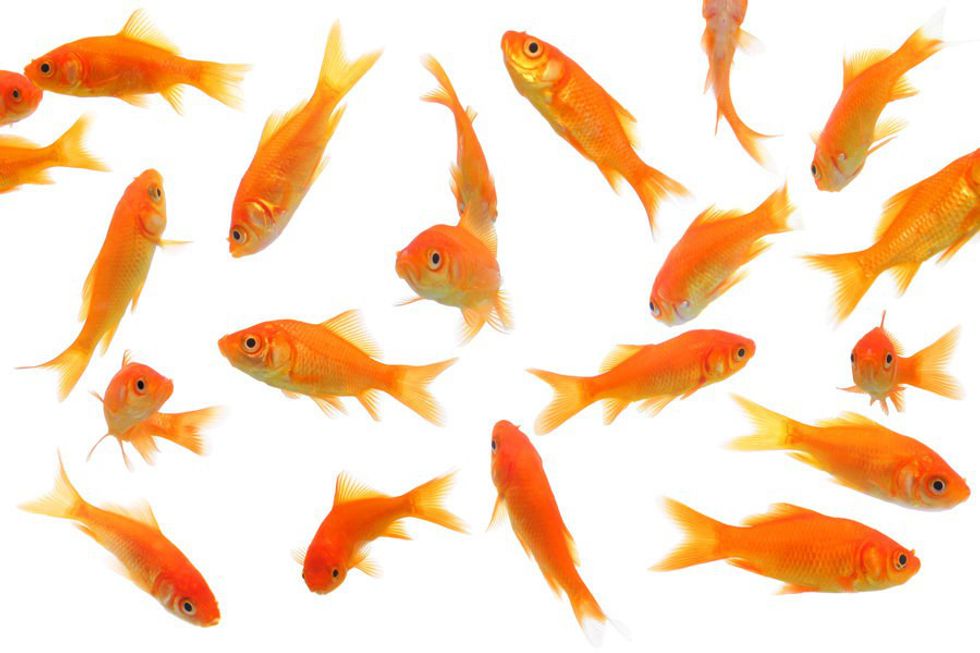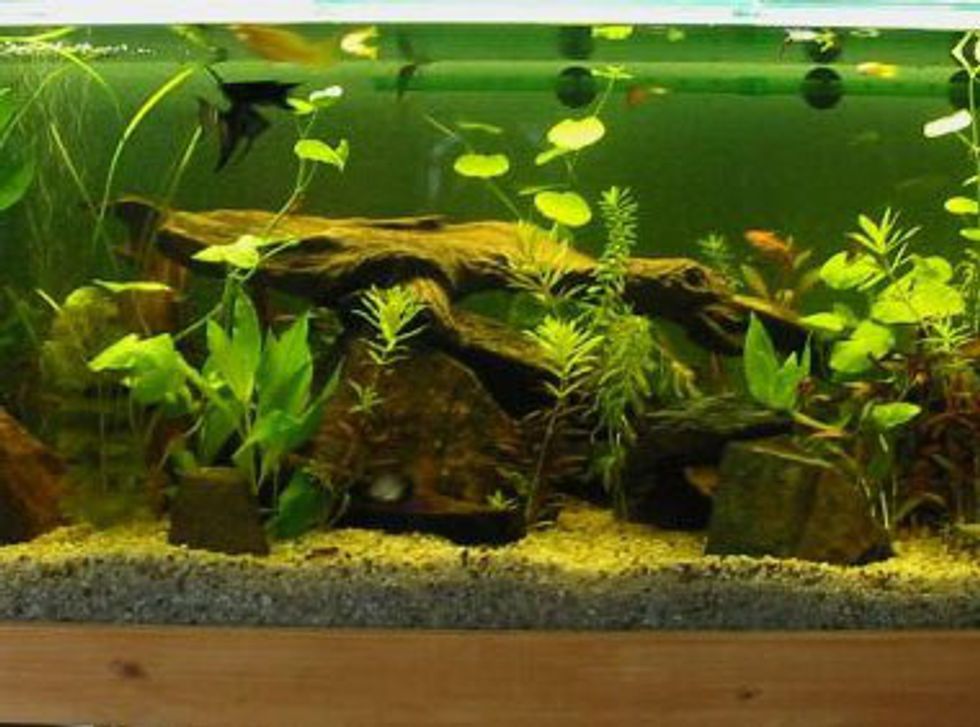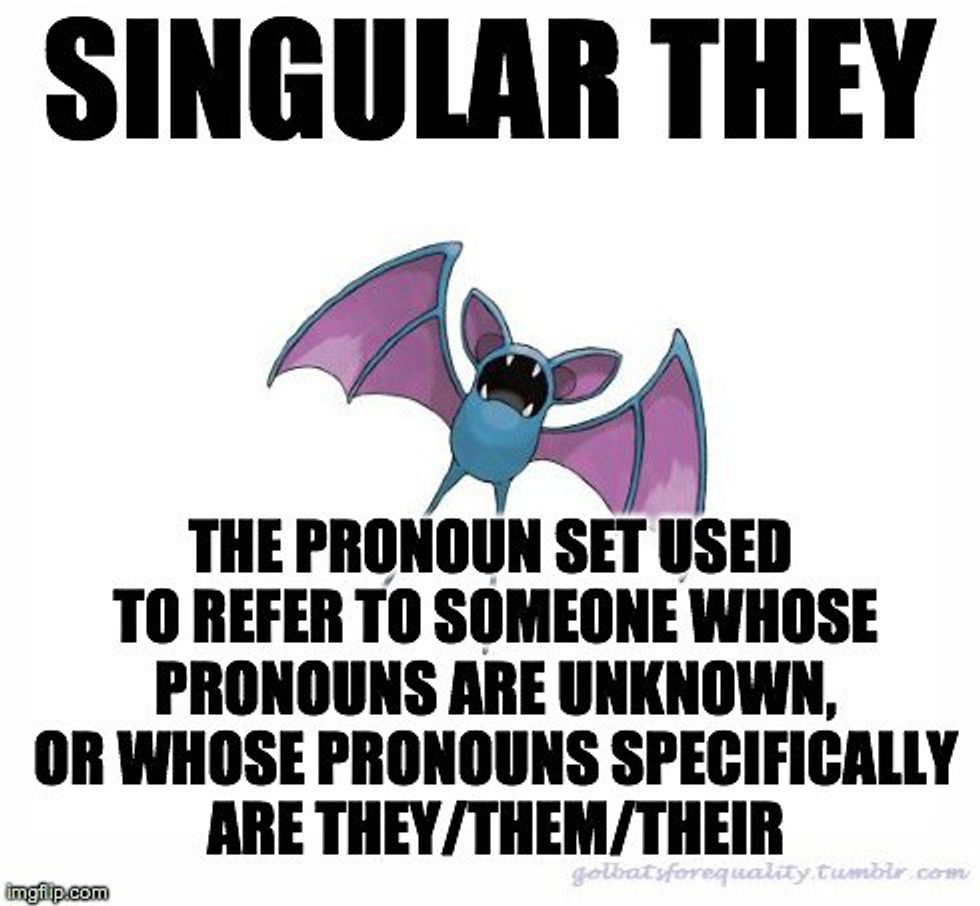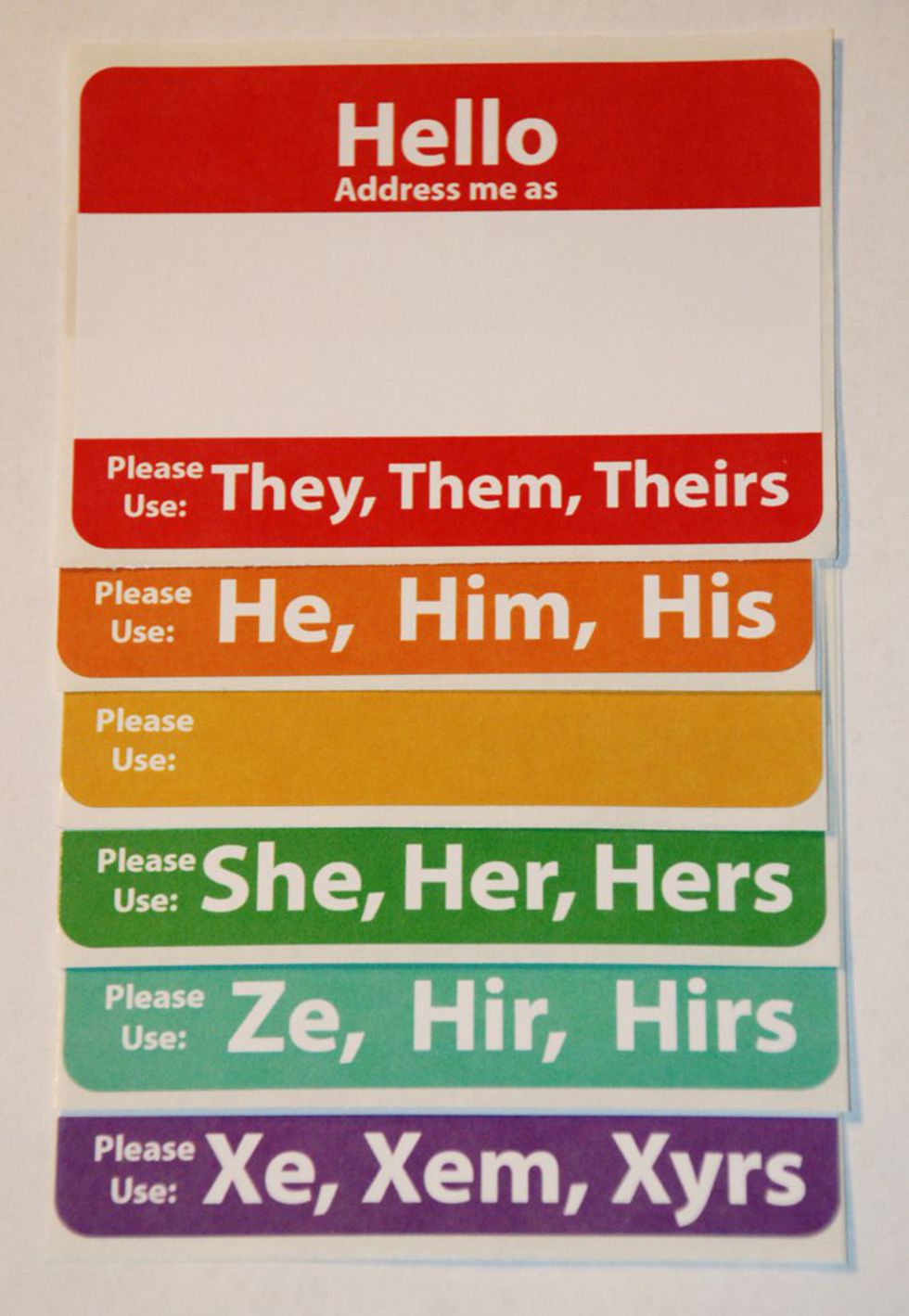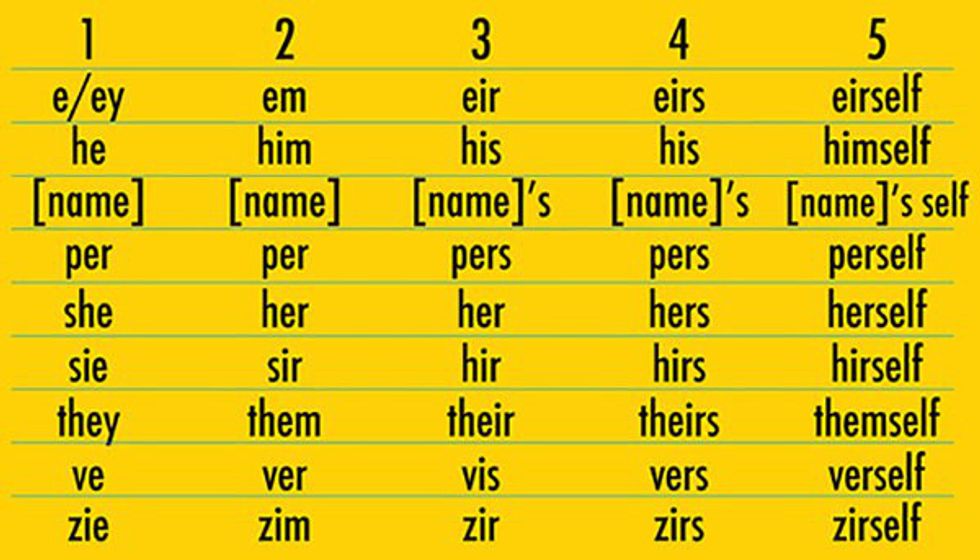After adding a 10-gallon aquarium to my dorm, my stress level has dropped, my boredom has disappeared, and my need to have a new hobby has been fulfilled. Doing my homework next to my little aquatic world makes me so content and satisfied, hearing the water trickling from the filter and seeing the light reflecting off the water. I bought it, arranged it, added life to it, and the rewarding process continues as I tend to it.
However, getting to this peaceful state wasn't easy. After randomly deciding that I wanted to set up a little fish tank in my dorm, I went to a local pet store and quickly realized that I needed to do more research. Each time I set up a new part of the tank, I had new questions and issues, and would spend 20 minutes or so researching on the inter-webs. After a month and hours of online reading, I have my perfect setup.
[Here's my 10-gallon freshwater aquarium with live plants and guppies]
Because having a pet of any kind is awesome, and creating my aquarium was extremely rewarding, I want to make the process a lot easier for those of you who are considering setting up your own tank. In this article I have broken down and explained the main issues I encountered when assembling my aquarium.
1. Avoiding the Fishbowl
Before buying a fish tank that will be home to your future fish, there is a huge misconception that I need to get out of the way. Quite frequently, goldfish and betta fish are seen in small fish bowls or vases. This, for a number of reasons, is NOT the appropriate housing for any type of fish, regardless of how they are displayed in a pet store. These containers are too small and cramped, and prevent the placement of a variety of decorations and plants . Fish need room to swim around and get exercise, and also need hiding spaces that allow them to feel comfortable when stressed. Can you imagine being stuck in a glass bowl that’s the size of a dorm room for your entire life, with nothing but some rocks and maybe a fake plant? Don’t do that to your fish, no matter how unintelligent you think they are. Your fish tank should be 5 gallons or bigger (bigger the better).
[Here's a 10 gallon tank that provides plenty of room for this betta fish to thrive]
One of the most important reasons that full-grown fish should not be kept in these types of containers is that the water becomes polluted very quickly due to the production of ammonia. Every time your fish produces waste, ammonia is released into the water. Every time you feed your fish and it misses a couple flakes, the food begins to decompose and releases ammonia. After a while, the ammonia builds up in the water and can make the environment toxic for your fish. The best way to combat this inevitable production of ammonia is to keep your fish in a tank with a filter. The filter will cycle through all of the tank water several times an hour. Using a fishbowl or a small round container prevents the use of a filter, which serves several more important functions.
The filter moves the water around the tank, providing circulation and surface disruption. When the water from the filter rushes against the tank wall, are bubbles are trapped under the surface of the water and broken up into smaller bubbles. Believe it or not, fish need air to survive, and this process makes it much easier for your fish to breathe.
Another reason fish bowls and vases are advised against are for sake of temperature regulation. Most fish need to be kept in water that is at least 75 degrees Fahrenheit, and cannot handle rapid temperature change. It is very difficult to keep the water above this temperature if you do not live in a warm climate, or if its winter. For this reason, heaters are necessary to keep the water temperature warm enough and stable enough for your fish. Most fish bowls and tanks are too small for heaters, and result in overheating and a dead fish. The filter’s water circulation also helps to distribute the heat produced from the heater, creating an environment that doesn’t have cool spots or hot spots.
2. Cycling the Tank
One of the most common misconceptions of setting up a new tank is that you can put all your new fish in right away. You can have a brand new tank that has a running filter, heater, and correctly treated water, but putting in more than 2 fish will most likely result in a tank full of dead fish (a.k.a. new tank syndrome). You will notice that in the beginning the water levels (measured with a standard water testing strip sold at pet stores) will be perfect, and a week after putting in your new fish, the ammonia, nitrite, and nitrate levels will be all over the place. This is due to the lack of necessary bacteria in the new water that breaks down the ammonia produced by the fish and food droppings.
Depending on the size of your tank and any bacterial accelerating products used, getting the right amount of this bacteria will take 6 to 8 weeks. This process is referred to as “cycling,” because the ending goal of habitable water is a result of completing the nitrogen cycle. Hey, calm down, it’s okay if you don’t remember anything from Biology (I sure as hell don’t), here’s a nice diagram.
Basically, you need a few hardy fish in the tank (or another source of ammonia) to produce ammonia, and then some bacteria will convert the ammonia to nitrite, then some more bacteria will convert the nitrite into nitrate, and then you do a partial water change to bring down the nitrate levels, resulting in fish friendly water, and the process starts over. The reason why we have to wait so long for the tank to be ready is for the production and growth of this necessary bacteria. It is entirely possible that you will lose a fish or two during this process, but do not add any more fish until your nitrate and nitrite levels are down, otherwise you will be killing more fish.
A few things you can do to speed up this process include adding bacterial supplements that help establish the bacteria faster, as well as the installation of live aquatic plants. As seen in the diagram of the nitrogen cycle, the plants benefit from the nitrate, and will also help break down the ammonia.
3. Don't Overcrowd
Remember that each fish produces waste, which breaks down into toxic ammonia, then nitrite, and then nitrate. The frequency of needed water changes is directly proportional to amount if fish that live in a tank. The greater the number of fish, the greater amount of nitrate that is produced. More nitrate equals more water changes. If you have too many fish in an aquarium, both you and the filter will not be able to keep up with the nitrate production. Along with the danger of water pollution, having too many fish can result in a cramped and uncomfortable home for your fishies. You want each of your fish to have enough personal space to feel comfortable and to prevent any stress.
4. Add Decoration
Don’t put a fish in an empty tank, spruce it up a little! The best way to help your little fishy friend feel at home is to place some aquarium decorations that create hiding spots and interactive obstacles. If your fish is scared out of its mind because all your friends are crowding around your new tank, they should be able to swim behind a plant or hide in a cave. Another reason to add décor to the tank is to give the fish something to swim around and interact with. Live plants are great because they move and sway when your fish swims through it or pecks at it, and give your tank a natural look.
5. Know Your Fish
One of the best ways to take care of your fish is to know what type of fish they are. If you know the species of your fish, you can look up all sorts of stuff about it. If you forgot to ask the specialist at the store what temperature the water should be, or if your fish enjoys tank mates, you can look it up online. There are tons of fish hobbyists who blog about what’s best for different species, and share their experiences with that species.
Now that you know the things that I didn't, you should be able to start acquiring the necessities for your aquarium. Here are a few other sites that should help you with all the rest.
Equipment List: http://www.firsttankguide.net/list.php
Setting Up the Tank: http://www.tetra-fish.com/aquarium-information/how...
More on Cycling: http://www.futurepets.com/trivia/aquariums-cycling...


